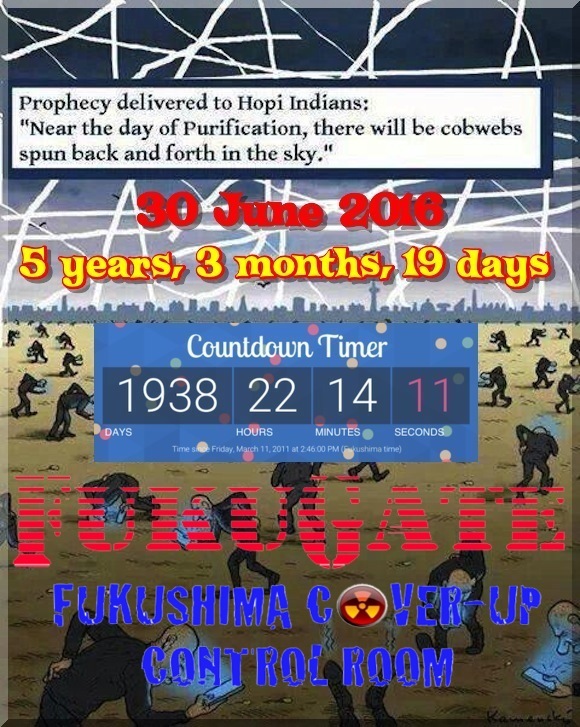It looks like you're using an Ad Blocker.
Please white-list or disable AboveTopSecret.com in your ad-blocking tool.
Thank you.
Some features of ATS will be disabled while you continue to use an ad-blocker.
share:
a reply to: matafuchs
I haven't dug into using a way back scenario but may have to. Thanks.
The problem with the first page of Part 1 is that no other pages or dates are available. It looks like they are but, they are not there. Hope that helps clarify!
Thank you again.
I haven't dug into using a way back scenario but may have to. Thanks.
The problem with the first page of Part 1 is that no other pages or dates are available. It looks like they are but, they are not there. Hope that helps clarify!
Thank you again.
seems the storage tanks are having problems. fukushima-diary.com
I do hope it has nothing to do with embrittlement/wigner effect. there's a lot of skyshine in them parts.
f
I do hope it has nothing to do with embrittlement/wigner effect. there's a lot of skyshine in them parts.
f
Interesting piece of research. Scientists have found that possibly 89% of all cesium that fell on Japan after the explosion of unit 3 fell incased in
glass microparticles that werent water soluble meaning its still in the area and wasnt washed away by rains as people initially thought.
www.eurekalert.org...
Radioactive Cesium Fallout On Tokyo From Fukushima Concentrated In Glass Microparticles
New research shows that most of the radioactive fallout which landed on downtown Tokyo a few days after the Fukushima accident was concentrated and deposited in non-soluble glass microparticles, as a type of 'glassy soot'. This meant that most of the radioactive material was not dissolved in rain and running water, and probably stayed in the environment until removed by direct washing or physical removal. The particles also concentrated the radioactive caesium (Cs), meaning that in some cases dose effects of the fallout are still unclear.
www.eurekalert.org...
Radioactive Cesium Fallout On Tokyo From Fukushima Concentrated In Glass Microparticles
New research shows that most of the radioactive fallout which landed on downtown Tokyo a few days after the Fukushima accident was concentrated and deposited in non-soluble glass microparticles, as a type of 'glassy soot'. This meant that most of the radioactive material was not dissolved in rain and running water, and probably stayed in the environment until removed by direct washing or physical removal. The particles also concentrated the radioactive caesium (Cs), meaning that in some cases dose effects of the fallout are still unclear.
So TEPCO apologized yesterday to its shareholders. By my way of thinking, these are not the people TEPCO needs to apologize to. These were the
beneficiaries of the lies. And many other experts and public officials arrived in Japan in the immediate aftermath to assess the situation themselves.
This cover-up goes much deeper than TEPCO and the government of Japan. Who was there? Who participated in this cover-up? GEs Jeffrey Immelt, Sec. of
State Clinton, the NRC, the IAEA, EPA, world governments, it's a long list contained in Part 1 of this thread as comings and goings were documented in
the first few months of this disaster. What will the world response be to this cover-up? The only reason for TEPCO to come clean on this cover-up is
to leverage the financial and scientific involvement of their co-conspirators in bringing Fukushima under control, if that's even possible. Blowing
the whistle on themselves was the only way to sound the alarm that others ordered this cover-up. More than one government and regulatory agency did
this, further increasing the damage and danger to the world.
TEPCO chief apologizes to shareholders for "meltdown" cover-up as problems rumble on at Fukushima plant
The Japan government is the first in line in TEPCO's finger pointing.
Shanghai Daily
Does anyone think Japan made this decision alone to cover-up a triple nuclear meltdown still in progress?
This decision, like the nuclear contamination, goes way beyond Japan's shores.
TEPCO chief apologizes to shareholders for "meltdown" cover-up as problems rumble on at Fukushima plant
TOKYO, June 28 (Xinhua) -- Tokyo Electric Power Co. (TEPCO) President Naomi Hirose apologized to the company's shareholders on Tuesday for it deliberately covering up the fact that reactors at the stricken Fukushima Daiichi nuclear power plant suffered meltdowns following being hit by an earthquake-triggered tsunami in March 2011.
Speaking to 1,200 people at TEPCO's annual shareholder meeting in Tokyo, Hirose conceded that the then-president of the utility has instructed senior officials to not use the words "core meltdown" to describe the situation at the plant following its key cooling functions being knocked out by the tsunami.
It wasn't until more than two months after the accident that TEPCO finally admitted the reactors at the plant has undergone core meltdowns.
The Japan government is the first in line in TEPCO's finger pointing.
Hirose admitted that TEPCO was ordered and itself issued an order not to use the word "meltdown" when referring to what happened at the still crippled plant in Japan's northeast.
Shanghai Daily
Does anyone think Japan made this decision alone to cover-up a triple nuclear meltdown still in progress?
This decision, like the nuclear contamination, goes way beyond Japan's shores.
originally posted by: DancedWithWolves
Does anyone think Japan made this decision alone to cover-up a triple nuclear meltdown still in progress?
This decision, like the nuclear contamination, goes way beyond Japan's shores.
That was one of the things covered in the original thread, the involvement of the nuclear industry itself in downplaying the crisis, but for the life of me I cant remember the name of the group that was behind it all. From within minutes after the tsunami hit and power failed they were giving orders, or at least advising strongly the direction to go, and what to say.
One more reason why the loss of thread one is damaging.
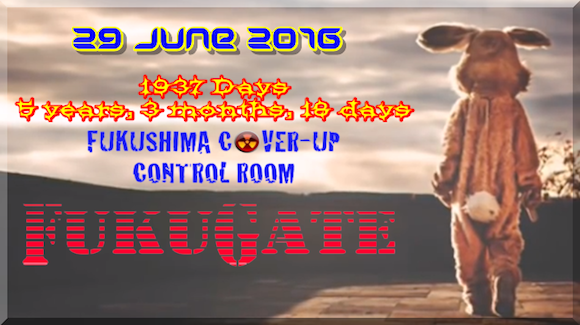
And now for something completely different.
And the upbeat, "catchy" music . . . somehow makes radiation 'cool' ?
How much radiation you're exposed to in everyday life - Business Insider
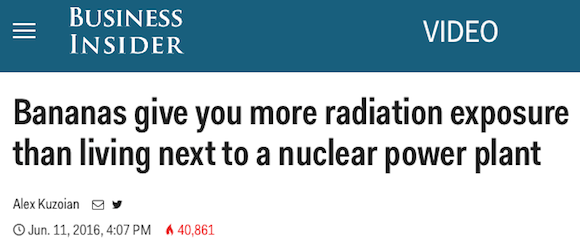
"People are often concerned about how radiation exposure may be affecting their health. It's true that extreme exposure can do terrible things to your body, but most of the radiation we absorb is in trace amounts from unexpected sources."
Produced by Alex Kuzoian
Somehow, we thought that this 'banana radiation hoax' had been exposed and torched long ago.
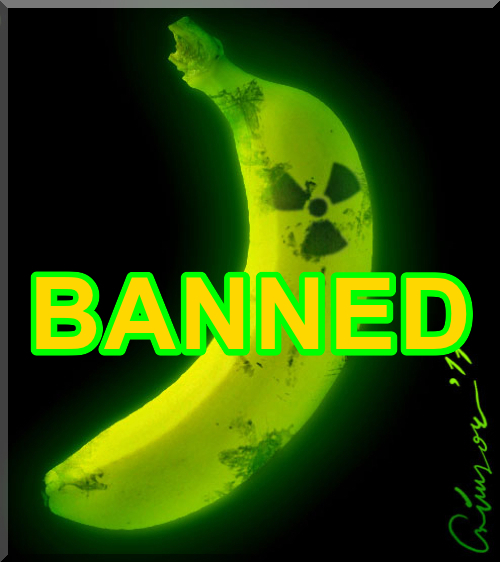
We are sure esteemed member Jaded&Cynical (hi Michael…how's our tree?) has this on file, as he commented on the post. Wethinks that was in the Part One… looking now.
www.abovetopsecret.com...
Japan declares 'nuclear emergency' after quake - PART 2, page 104
Japan declares 'nuclear emergency' after quake - PART 2, page 104
Geoff Meggitt—a retired health physicist, and former editor of the Journal of Radiological Protection, says,
"There’s an enormous variation in the risks associated with swallowing the same amount of different radioactive materials—and even some difference between the same dose, of the same material, but in different chemical forms.
It all depends on two factors:
1) The physical characteristics of the radioactivity—i.e, What’s its half-life? Is the radiation emitted alpha, beta or gamma?
2) The way the the radioactivity travels around and is taken up by the body—i.e., How much is absorbed by the blood stream? What tissues does this specific isotope tend to accumulate in?
The Potassium-40 in bananas is a particularly poor model isotope to use, Meggitt says, because the potassium content of our bodies seems to be under homeostatic control. When you eat a banana, your body’s level of Potassium-40 doesn’t increase. You just get rid of some excess Potassium-40. The net dose of a banana is zero.
And that’s the difference between a useful educational tool and propaganda. (And I say this as somebody who is emphatically not against nuclear energy.)
Bananas aren’t really going to give anyone “a more realistic assessment of actual risk”, they’re just going to further distort the picture.
I thought I would leave the following for future reference and in the chance someone else may notice the same.
I am on the west coast of Cumbria, uk.
about a year after the initial fukushima criticalities, I acquired a soeks quantum+ dosimeter/Geiger counter. twin Geiger/muller tubes.
up until today, I have been accustomed to two specific measurement criteria ie in the house measurements and the external environment. these can be broken down further, however that is secondary to my point.
on the coast, there is a quiet zone with regards to the absence of powerlines, cell phone strength and generally the general public. this area has me dwelling for longer due to the absence of the above. in short, the readings in this area have been between 0.14 usv/h (micro Sieverts per hour) and 0.25usv/h. this has been the norm up until today.
readings that are taken within the dwelling have ranged from 0.17usv/h up to 0.24usv/h. several spikes occurred within the dwelling over the past few years with 0.52usv/h occurring once and several within 0.32usv/h to 0.37usv/h range.
turning the soeks on today brought some surprise. internal dwelling readings continue to show between 0.07usv/h and 0.10usv/h
external quiet zone readings showed 0.04usv/h to 0.08usv/h.
this I haven't seen since I purchased the soeks and I thought it would be fitting for a post.
i often place the soeks next to an isotope containing fire alarm as a rudimentary calibration tool that gives me 0.32/0.37usv/h.
I can 99% rule out dodgy instrument. I am thinking perhaps others in different locations may have noticed anything of a similar nature either a number of days prior or post date.
I can't help but think i'm either in a lull which is a first or there may be a major diminishing of the regular values I have observed over the years.
thank you for your time regards fakedirt
I am on the west coast of Cumbria, uk.
about a year after the initial fukushima criticalities, I acquired a soeks quantum+ dosimeter/Geiger counter. twin Geiger/muller tubes.
up until today, I have been accustomed to two specific measurement criteria ie in the house measurements and the external environment. these can be broken down further, however that is secondary to my point.
on the coast, there is a quiet zone with regards to the absence of powerlines, cell phone strength and generally the general public. this area has me dwelling for longer due to the absence of the above. in short, the readings in this area have been between 0.14 usv/h (micro Sieverts per hour) and 0.25usv/h. this has been the norm up until today.
readings that are taken within the dwelling have ranged from 0.17usv/h up to 0.24usv/h. several spikes occurred within the dwelling over the past few years with 0.52usv/h occurring once and several within 0.32usv/h to 0.37usv/h range.
turning the soeks on today brought some surprise. internal dwelling readings continue to show between 0.07usv/h and 0.10usv/h
external quiet zone readings showed 0.04usv/h to 0.08usv/h.
this I haven't seen since I purchased the soeks and I thought it would be fitting for a post.
i often place the soeks next to an isotope containing fire alarm as a rudimentary calibration tool that gives me 0.32/0.37usv/h.
I can 99% rule out dodgy instrument. I am thinking perhaps others in different locations may have noticed anything of a similar nature either a number of days prior or post date.
I can't help but think i'm either in a lull which is a first or there may be a major diminishing of the regular values I have observed over the years.
thank you for your time regards fakedirt
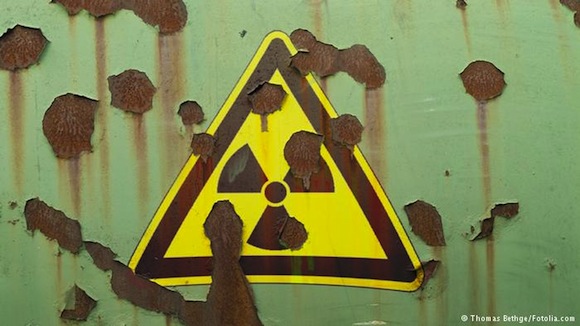
Germany to dump nuclear waste for good - but where?
05 July 2016
A 700-page document prepared by a special commission outlines the required criteria for Germany's yet-to-be-decided final disposal site for nuclear waste. The report has revived a long and controversial debate.
The Christian Democratic Union (CDU) and the Socialist Democratic Party of Germany (SPD) finally agree on something: "We have come up with a good compromise," announced Ursula Heinen-Esser (CDU) and Michael Müller (SPD) Tuesday in Berlin. "But it was hard work."
For the last two years, both politicians have co-chaired a commission with a complicated task: What characteristics must a final disposal site for nuclear waste in Germany have?

Questions involved geological formations - that is, salt, granite or clay; depth below the earth's surface; various methods; and how citizens might participate in the search for an appropriate site. It all sounds technical and a bit boring, but to date, every debate related to nuclear energy in Germany has been highly political and very emotional. And so it is here.
Yet the consensus is that Germany needs a central repository for the radioactive waste produced by the country's almost 20 nuclear power plants, the last of which are to be removed from the energy grid by 2022.
And another thing is clear as well: The final depository will be at least 300 meters (approximately 1,000 feet) below the earth's surface. Yet, as has consistently been the case over the last 40 years, the most vehement fight will be over the fate of Gorleben. Specifically, as to the question of whether a final disposal site could be built there or not.
If a picture is worth a thousand words, will these put me over my word allotment?
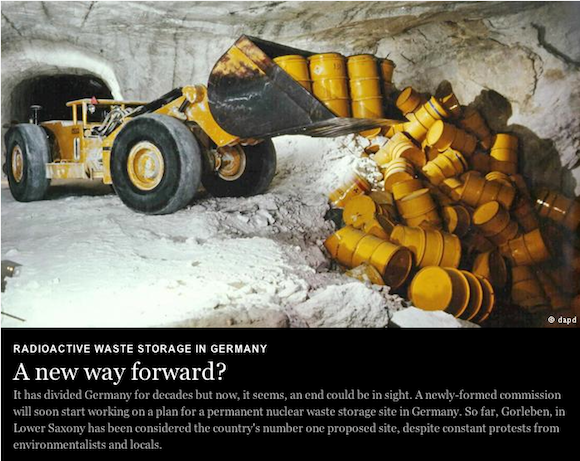
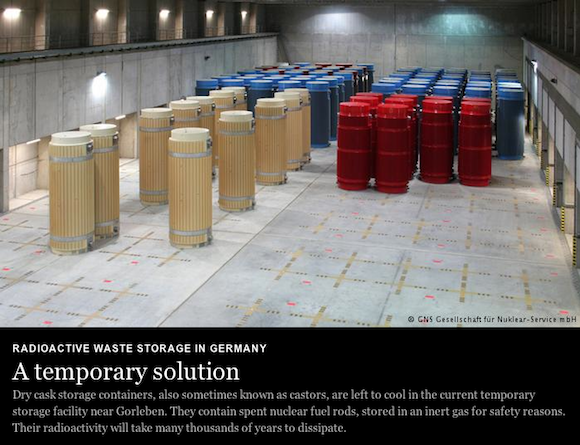
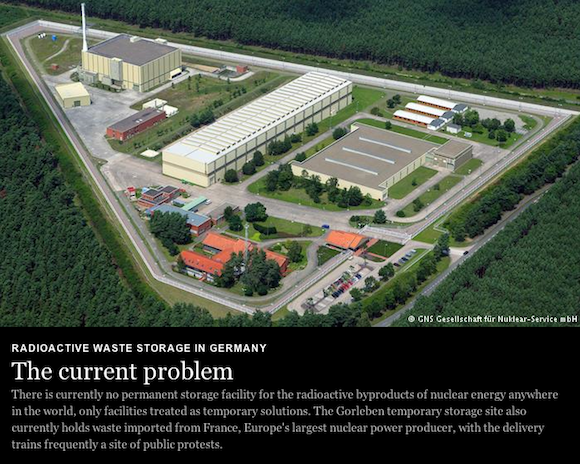

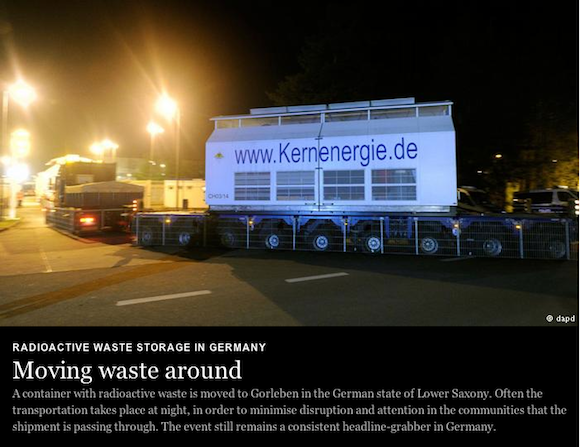

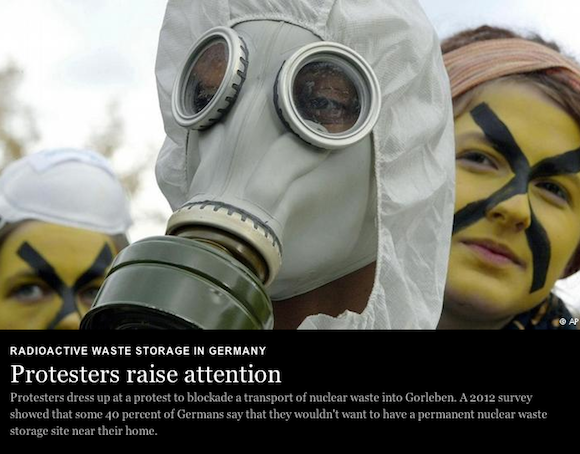


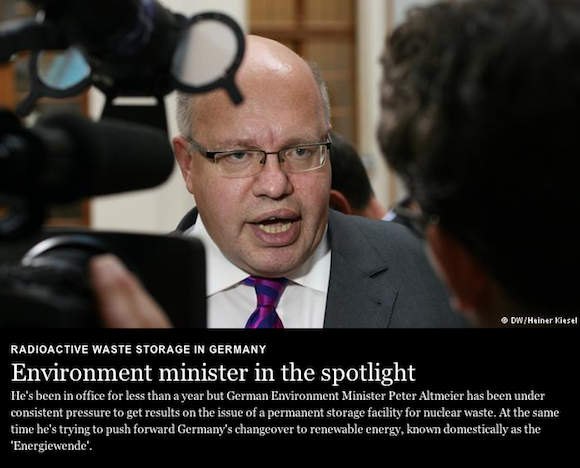

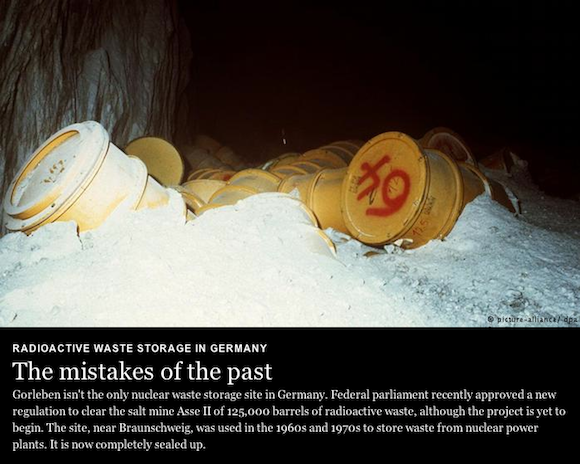


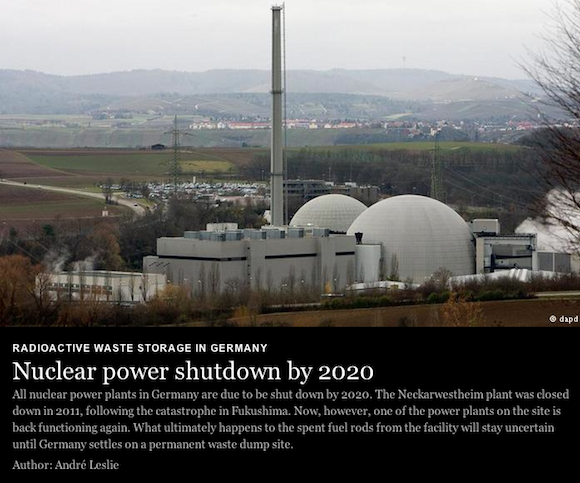

This has got to be the scariest thing Ive heard yet. Throughout the course of all the west coast die offs the media has always focused on warm acidic
oceans and parasites or whatever. This new discovery wasnt caused by either, and to me the only possible answer is radiation. Mussels are dying off in
droves by contagious cancer. Its that contagious part that is so scary. From ENE this AM;
enenews.com... -cancer-spread-one-species-another-like-virus-scientists-beyond
All along Canada’s Pacific coast, mussels are dying… Bodies are swollen by cancerous tumors — Unprecedented mutations allowing cancer to spread from one species to another like a virus
Washington Post, Jun 22, 2016 (emphasis added): All along the western Canadian coast, mussels are dying. Their blobby bodies are swollen by tumors. The blood-like fluid that fills their interiors is clogged with malignant cells. They’re all sick with the same thing: cancer. And it seems to be spreading. For all its harrowing, terrifying damage, the saving grace of cancer has always been that it dies with its host. Its destructive power comes from turning victims’ own cells against them and making them run amok. But when molecular biologist Stephen Goff biopsied these mussels, he found something strange. The tumor cells didn’t have the same DNA as their host. Instead, every mussel was being killed by the same line of cancerous cells, which were jumping from one individual to the next like a virus
enenews.com... -cancer-spread-one-species-another-like-virus-scientists-beyond
All along Canada’s Pacific coast, mussels are dying… Bodies are swollen by cancerous tumors — Unprecedented mutations allowing cancer to spread from one species to another like a virus
Washington Post, Jun 22, 2016 (emphasis added): All along the western Canadian coast, mussels are dying. Their blobby bodies are swollen by tumors. The blood-like fluid that fills their interiors is clogged with malignant cells. They’re all sick with the same thing: cancer. And it seems to be spreading. For all its harrowing, terrifying damage, the saving grace of cancer has always been that it dies with its host. Its destructive power comes from turning victims’ own cells against them and making them run amok. But when molecular biologist Stephen Goff biopsied these mussels, he found something strange. The tumor cells didn’t have the same DNA as their host. Instead, every mussel was being killed by the same line of cancerous cells, which were jumping from one individual to the next like a virus
a reply to: zworld
and the anodic protection/magnetic fields that surround all of the oceans shipping as a form of corrosion protection is
attracting and dragging these transuranics everywhere they sail. all magnetic fields have the potential for capturing alpha/beta isotopes.
the virus type horizontal transmission of cancers should be msm like yesterday!? interrorboom.
f
and the anodic protection/magnetic fields that surround all of the oceans shipping as a form of corrosion protection is
attracting and dragging these transuranics everywhere they sail. all magnetic fields have the potential for capturing alpha/beta isotopes.
the virus type horizontal transmission of cancers should be msm like yesterday!? interrorboom.
f
I sent a note to fairewinds asking them about my idea to dig out a channel that will allow the water to flow around the plant, and to drain the bay in
front of the plant, there-by keeping Fuk from contaminating the rest of the planet. I got the following response:
Sorry for such a late reply. We’ve had an eventful summer so far with crew members getting married, going on honeymoons, vacations time, and the 4th of July holiday. Hope you are doing well and will excuse our late reply.
As to your question, Fairewinds has been saying that TEPCO needs to redirect groundwater for the past 5-years. You’re 100% correct, something needs to be done and should have been done earlier.
All the best,
The Fairewinds Crew
So, not a such stupid idea.
Sorry for such a late reply. We’ve had an eventful summer so far with crew members getting married, going on honeymoons, vacations time, and the 4th of July holiday. Hope you are doing well and will excuse our late reply.
As to your question, Fairewinds has been saying that TEPCO needs to redirect groundwater for the past 5-years. You’re 100% correct, something needs to be done and should have been done earlier.
All the best,
The Fairewinds Crew
So, not a such stupid idea.
a reply to: fakedirt
I didnt know that about magnetism. Thanks Fakedirt. That raises some interesting thoughts and questions, like is this a reason for the high levels of tritium in the Arctic.
Plus, according to the following tritium is undetectable with a normal gieger counter.
agrdailynews.com...
One of the worst dangers of tritium is that it cannot be measured with a normal Geiger Counter, which makes it that much more hazardous. Lethal levels of tritium are totally invisible and undetectable for all practical intents and purposes.
Tritium emits beta particles but the energy from this man made radioactive element is so weak, that it is blocked by the mica window in front of the detector.
I didnt know that about magnetism. Thanks Fakedirt. That raises some interesting thoughts and questions, like is this a reason for the high levels of tritium in the Arctic.
Plus, according to the following tritium is undetectable with a normal gieger counter.
agrdailynews.com...
One of the worst dangers of tritium is that it cannot be measured with a normal Geiger Counter, which makes it that much more hazardous. Lethal levels of tritium are totally invisible and undetectable for all practical intents and purposes.
Tritium emits beta particles but the energy from this man made radioactive element is so weak, that it is blocked by the mica window in front of the detector.
Greetings,
We all received some significant help finding large parts of the Part 1 thread. The assist came from one ATS member, not the ATS leadership. Please give thanks to our member benefactor awatara. Serious effort!
We all received some significant help finding large parts of the Part 1 thread. The assist came from one ATS member, not the ATS leadership. Please give thanks to our member benefactor awatara. Serious effort!
originally posted by: awatara
So, here we go. 959 pages in total. The best way I found to handle it, is the Firefox addon called ScrapBook X.
Unpack the RAR somewhere and import that folder into ScrapeBook X. I found this plugin giving an easy access to the pages, and you can make sidenotes, highlights, inner links, or even edit the html individually.
Going through the pages quickly, I found most of the youtube videos unavailable, but plenty of pictures are there, the links are working unless the site behind went unavailable, and even then... wayback machine that s__t, make your own folder beside the downloaded one, save it, and you can make an "inner link". Pretty clever addon, stays with me for sure! ^^
There are also pictures that doesn't seem to show up, try to copy-paste the "dead" link, dump the first (waybackmachine) part and use just that original link. Seems to do the magic many times.
I know it's far from perfect, and it's still available on the waybackmachine, but at least it's fast, surely won't get lost if you have your backup plan, doesn't try to load those non-existing pages, nor gives you headache to find the next available one. Unfortunately those missing ones went missing for real, unless the admins can and will recover it.
So here is the download link.
edit on 10-7-2016 by DancedWithWolves because: (no reason given)
Just want to give this thread a bump.
I hope folks are paying attention to this thread.
Please keep up the great work and time you spend to keep us updated.
I am paying attention.
I hope folks are paying attention to this thread.
Please keep up the great work and time you spend to keep us updated.
I am paying attention.
a reply to: matadoor
I believe when the plant was constructed the site was excavated to a considerable depth bringing it into close contact with the underground river flowing down from the hills. It's as though they designed it for the purpose of contaminating the ocean.
I believe when the plant was constructed the site was excavated to a considerable depth bringing it into close contact with the underground river flowing down from the hills. It's as though they designed it for the purpose of contaminating the ocean.
a reply to: DancedWithWolves
The pleasure is truly mine but flowers must be shared with comrade matafuchs for mentioning wayback machine.
You guys are truly amazing, keeping the thread alive for years, following up with unpressed news, giving an enormous effort to inform those who still interested how the japanese three legged elephant is doing.
Respect guys. Thank You!
The pleasure is truly mine but flowers must be shared with comrade matafuchs for mentioning wayback machine.
You guys are truly amazing, keeping the thread alive for years, following up with unpressed news, giving an enormous effort to inform those who still interested how the japanese three legged elephant is doing.
Respect guys. Thank You!
a reply to: Kester
The idea is to take out the water way upstream. Let's say they intercept 80% and drain the bay. Just that alone will stop a ton of the contamination from getting into the ocean.
But, they won't do it. Asian mindset, we can't let anyone know we have something really bad happening.
Almost everyone I know is avoiding seafood from the pacific, in fact I used to LOVE King Crab, and now I stay clear of it if it comes from Alaska.
Just not worth the risks.
The idea is to take out the water way upstream. Let's say they intercept 80% and drain the bay. Just that alone will stop a ton of the contamination from getting into the ocean.
But, they won't do it. Asian mindset, we can't let anyone know we have something really bad happening.
Almost everyone I know is avoiding seafood from the pacific, in fact I used to LOVE King Crab, and now I stay clear of it if it comes from Alaska.
Just not worth the risks.
new topics
top topics
-
January 6th report shows disturbing trend (nobody is shocked)
US Political Madness: 16 hours ago, 22 flags -
The Truth about Migrant Crime in Britain.
Social Issues and Civil Unrest: 17 hours ago, 13 flags -
Let's talk planes.
General Chit Chat: 14 hours ago, 5 flags -
Inexplicable military simulation - virtual reality showdown in the night..
The Gray Area: 17 hours ago, 2 flags
active topics
-
The Truth about Migrant Crime in Britain.
Social Issues and Civil Unrest • 16 • : crayzeed -
Gravitic Propulsion--What IF the US and China Really Have it?
General Conspiracies • 18 • : Lazy88 -
Musk calls on King Charles III to dissolve Parliament over Oldham sex grooming gangs
Mainstream News • 199 • : yeahright -
Judge rules president-elect Donald Trump must be sentenced in 'hush money' trial
US Political Madness • 38 • : network dude -
January 6th report shows disturbing trend (nobody is shocked)
US Political Madness • 59 • : network dude -
Greatest thing you ever got, or bought?
General Chit Chat • 23 • : DAVID64 -
ILLUMINATION: Dimensions / Degrees – Da Vincis Last Supper And The Philosophers Stone
Secret Societies • 12 • : Compendium -
Stuck Farmer And His Queue Jumping Spawn
Rant • 8 • : TimBurr -
Trudeau Resigns! Breaking
Mainstream News • 68 • : MindBodySpiritComplex -
Live updates: Congress meets to certify Trump's presidential election victory
US Political Madness • 19 • : KrustyKrab

